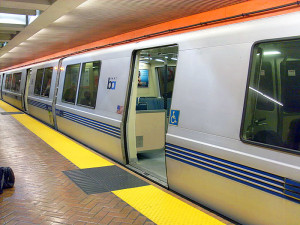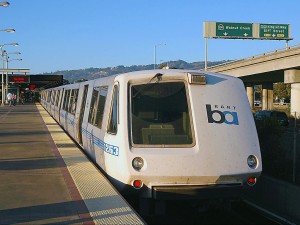 On Thursday, September 19th the California Public Utilities Commission voted 5-0 in favor of accepting the ridesharing technology as a legitimate business in California. While it has started in San Francisco due to the need of people to get from point A to point B and not have to wait an hour for a taxi it has grown into something more than that.
On Thursday, September 19th the California Public Utilities Commission voted 5-0 in favor of accepting the ridesharing technology as a legitimate business in California. While it has started in San Francisco due to the need of people to get from point A to point B and not have to wait an hour for a taxi it has grown into something more than that.
As a public disclaimer, I do drive for Side•Car so I am a little bit biased in this area I’ll admit, but I also have lots of people around town who also take taxi’s and even friends who are taxi drivers to fill me in on this so keep this in mind.
To make things clear from the beginning for those who have been trying to get a taxi and had trouble here are some of the reasons why.
- Taxi Companies are in the business of renting taxis: There is no incentive for a company to get you from point A to point B. The taxi companies make their money from renting the taxis or in short, they don’t make money from you taking a taxi, but from the drivers who rent the taxis.
- There is a combined total of roughly 1200 taxis available in San Francisco: This is split between all of the taxi companies. If you call for a cab to say, Yellow Cab which is the largest you have about 400 taxis available. This cuts the availability of taxis to riders significantly.
- It’s much easier to hail a taxi on the street than call for a pick up: Cab drivers are not employees of the cab companies, but independent contractors so they are under no obligation to pick up a call that is requested. There is no require of a cab driver to do anything other than pay for the taxi rental and return it with a full tank of gas at the end of the shift. Anything they do in between is up to them.
Do you see a problem here? Granted, ridesharing companies such as Side•Car, Lyft and Uber aren’t under a requirement to get you from point A to point B either, but there is a psychological mind set amongst the drivers that works in their favor. While there are a few who drive solely for income it is still not the same as a job. They can do it whenever they have free time and start and stop when they want so they can work it into their schedule.
Rideshare companies have been called elitist by cab companies saying that they won’t pick up low-income or elderly people who don’t own smartphones. I would disagree with this. I have had numerous people I’ve given rides to from 20-70 and all income levels in my car. I frequently drive through the Tenderloin or low-income areas that are underserved by taxis and notice quite a few people on the streets with smartphones. I frequently have picked up people at the local grocery stores who need a lift home with several bags of groceries and sometimes if I have the time I’ll help them unload and carry their bags in. I also have people call for me that need their parents picked up and dropped off in various locations around town so it is definitely a scalable technology. Smartphones are also being given away at this point in time and who in their right mind in this day and age doesn’t own a smartphone that calls for a ride? Last time I checked the majority of low-income people don’t take cabs, but wait for the bus using a state subsidized clipper card.
The biggest boon to riders is that if you are outside the downtown or Mission District you can now get a ride. The Sunset, Richmond, Ingelside and Oceanview areas are a no man’s land for getting a cab. I can’t even count the number of people in the Sunset or Richmond who’s said how great rideshare services are because they simply can’t get a cab in those areas.
Now regarding the safety of vehicles in participating in ridesharing there have been a few new requirements.
- Each company must keep a $1 million dollar insurance policy to cover each driver in excess of each driver’s insurance.
- Each company must maintain a strict drug and alcohol policy [as in no drugs or alcohol]
- A 19 point vehicle inspection is required of each vehicle someone driving for the companies must undergo.
There are other points, but these are the safety issues some people might be concerned with. All of these except the last have been met previously. Since most of the companies require each car to be from the year 2000 or later the chance of one not passing a 19 point inspection is rare. I know most oil change companies provide a 21 point inspection when you get your oil changed and if you change it regularly like I do then you know exactly what is wrong with your car so you can get it fixed.
The decision affects not just the San Francisco Bay Area, but the entire state of California opening the door to ridesharing in parts of the state that may not be considered large enough to warrant taxi service. Overall the price of rideshare works out cheaper than a taxi because a tip is expected on top of the fare regardless of whether or not the driver gave you a good ride or not [but we won’t talk bad about you if you do tip]. The taxi system and the way it works doesn’t support the needs of the people it was meant to serve. Ridesharing companies offer more drivers at more times in more places around the Bay Area so it is easier to get to the people and to get them where they need to go. I’ve personally used the service several times and found that I never had to wait longer than five minutes. When I’m driving and I take a call that’s ten minutes away I frequently wish I didn’t have to make the person wait as long, but usually the drivers are happy that I’m at their door within the time noted by the GPS locator used by the apps. Probably the biggest reason I like driving for a rideshare company is that it takes me all over the city to see what’s happening now and not in tomorrow’s newsfeed.







